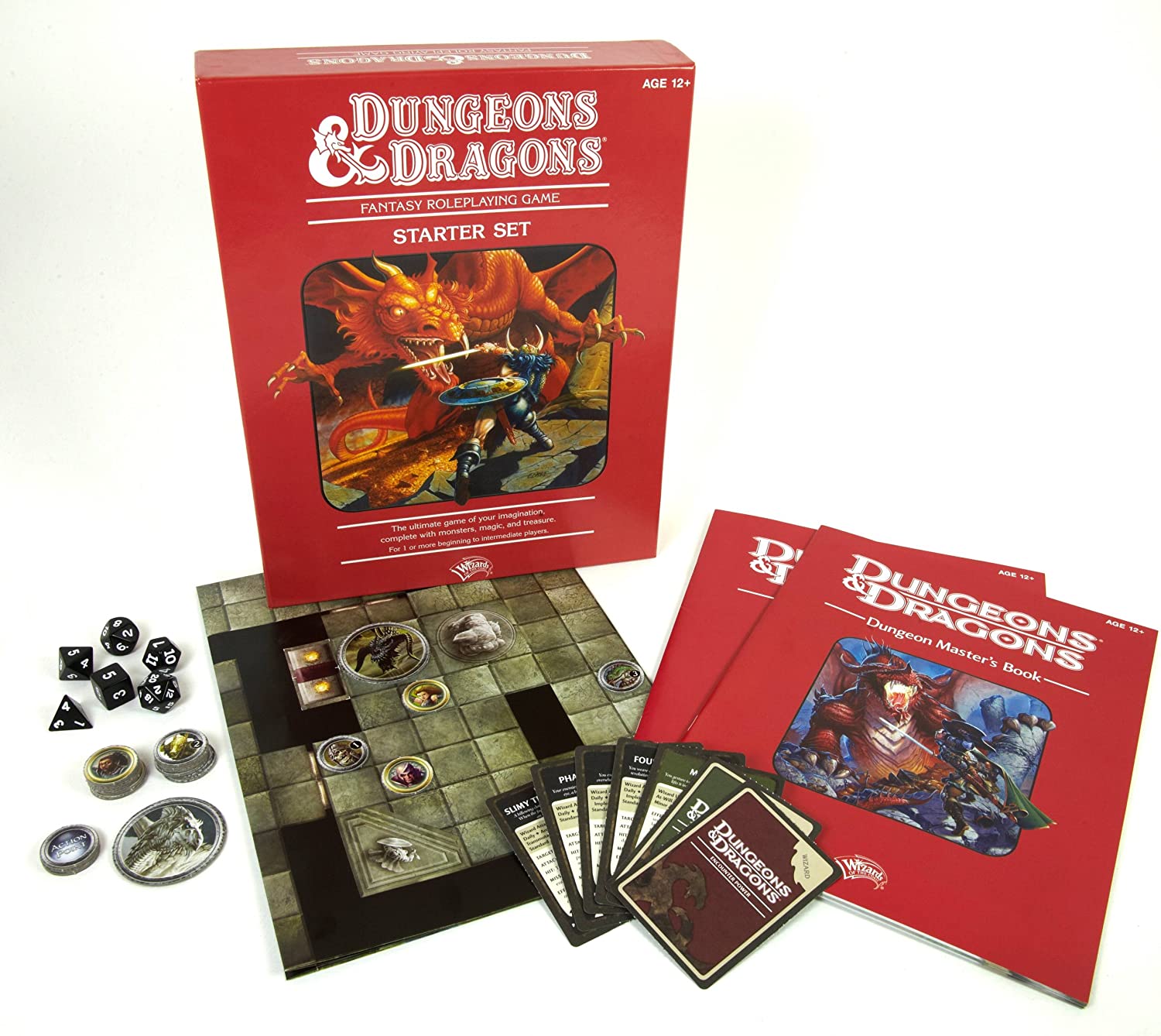Dungeons & Dragons (D&D) is a fantasy tabletop role-playing game designed by Gary Gygax and Dave Arneson and originally published in 1974 by Tactical Studies Rules, and has been published by Wizards of the Coast since 1997. Core elements such as combat mechanics, setting, characters, powers, and items are enumerated in several player handbooks, but the game emphasizes collaborative world-creation and storytelling through player self-expression: rules can be adapted and overturned.
Players create their own character to role-play as for a fantasy-themed adventure, and since D&D is incredibly open-ended in terms of possibility, sessions are refereed by a Dungeon Master (DM) who has ultimate control over the world, non-player characters, and story events. While a D&D session can be aided by a physical map and tokens, most of the game takes place in the collective imagination. Players can respond to the environment (e.g. questioning villagers and battling monsters) through acting out their characters and dealing damage from dice rolls, with modifiers added based on their selected role (e.g. wizard, fighter, monk), skills, and maneuvers (e.g. fireball spell, dagger throw).
In the MDA framework of “fun,” this game best fulfills the Fantasy, Narrative, Fellowship, Discovery, and Expression, and for the sake of this write-up, I will focus on D&D’s combat mechanics, which deepens the fantasy quest narrative and encourages players to express their characters’ backstories and discover in-game lore as they work together to defeat a monster. At the start of a fight, players roll for initiative to see who will go first during each sequential 6-second round. To defeat a monster, players must lower the monster’s health points to 0, and they can use physical/magical attacks or move within a certain range. A common house rule is that “talking is a free action,” which means even during the dice-rolls of combat, players can still weave in story elements (“E, I’m coming to save you!”), and successful participation leads players to gain experience points (XP) and level-up their skill statistics and potential maneuvers.
One exciting part of combat is that even though most players will have to roll to attack (e.g. 1d20, which must surpass the target’s armor class ranging 1-20+), and then roll for damage (e.g. a dagger is 1d4, while an enchanted sword may be 1d10 + 4), characters will have additional modifiers on their rolls based on their skills and the quality or type of their item. A character with a dexterous acrobat backstory might add +6 to their attack roll, while a very strong paladin might add +4 to their damage roll. The DM can also add extra modifiers or give dis/advantage (choose the worst/best dice roll out of 2) depending on the quality of the role-play or the ingenuity/feasibility of the idea (e.g. pour ball-bearings across the slippery floor to hinder movement). Character differentiation and backstory (the skillsets of a wizard will differ to those of a fighter) thus shapes the mechanics of combat, which in turn affects player decisions and possible outcomes. One common strategy is for the fighter to deal short-range weapon-based damage since they tend to have the best attack modifiers (e.g. dexterity, strength), while the magic-wielders prepare spells from long-range since they often have a low armor class and may need several turns. As the characters have different dice modifiers, players have the incentive to maximize their combat turns by doing actions that most suit their character’s skills. (Players also have the incentive to loot dungeons, earn money, and explore unfamiliar places to get better quality items, but that’s another story). Players will tend to create characters that they enjoy for mechanics and storytelling, and to ensure that their group has a balanced range of character roles and skills so that they can work effectively as a team for combat and the overall multi-session quest.
Thus, even though combat takes the form of an organized series of dice rolls and real-time mathematical crunching, the flexibility of the system rewards excellent character role-play and tactical strategy, at the DM’s discretion. Combat then is a rich opportunity for players to express the minutiae of their created characters and to collaborate and strengthen their relationship to others. The fantastical elements and setting, with dragons to defeat and rocky cliff sides to exploit, further immerses players and enhances their adventure quest as they must collaborate with the DM to create a narrative that evokes enjoyment for all players.



